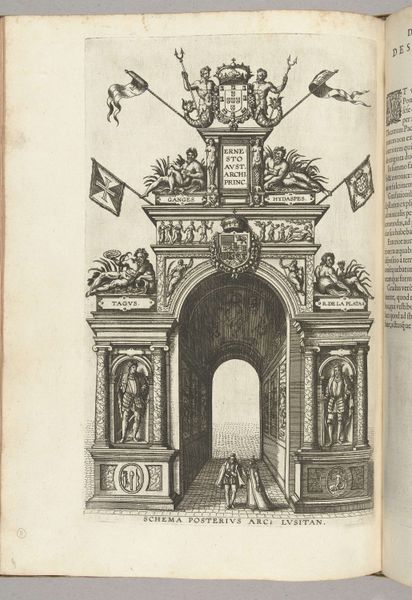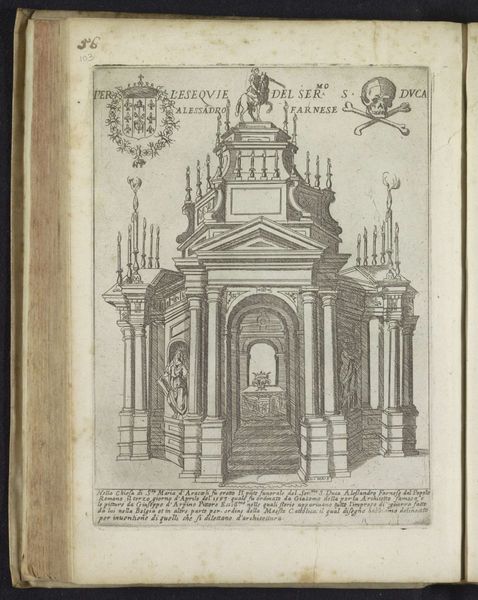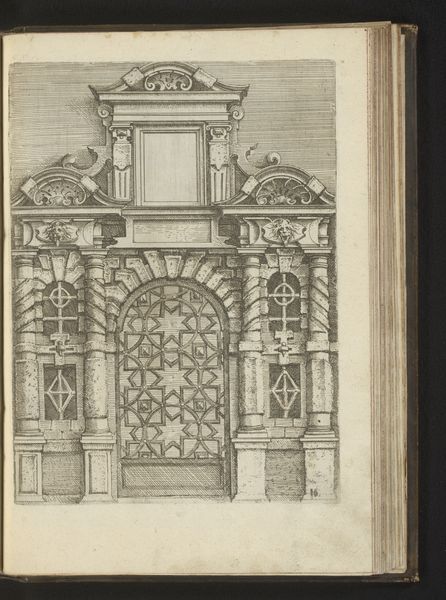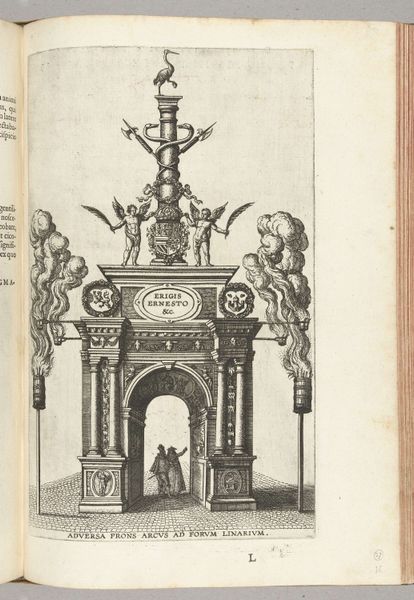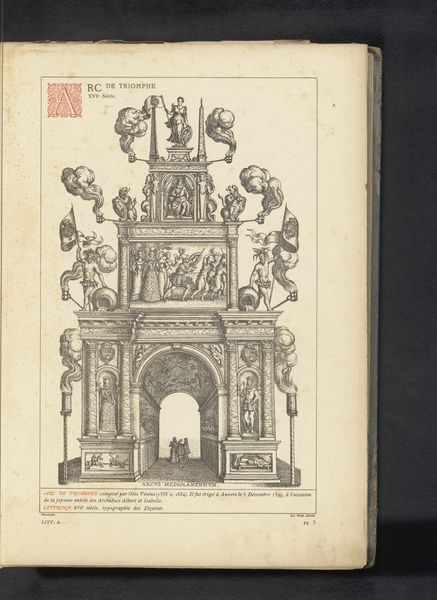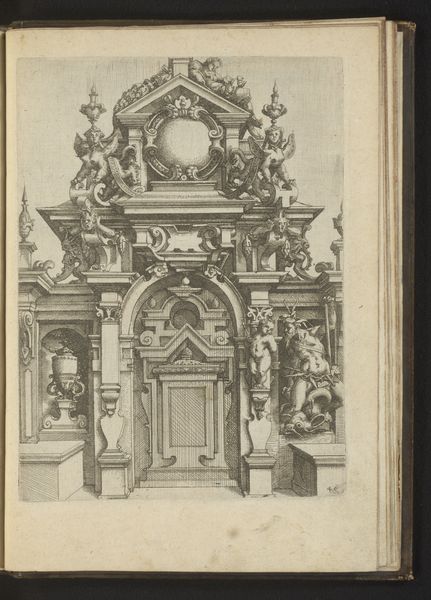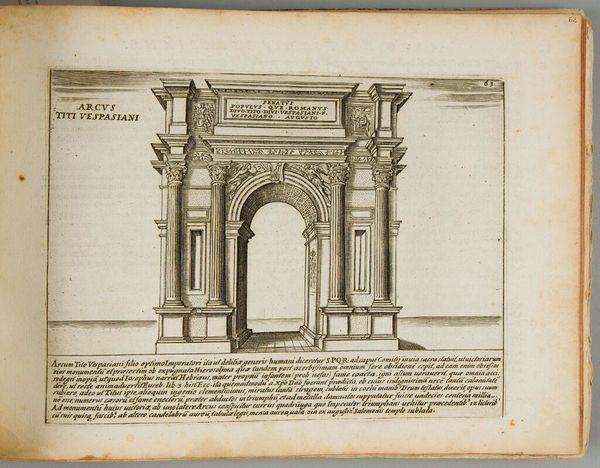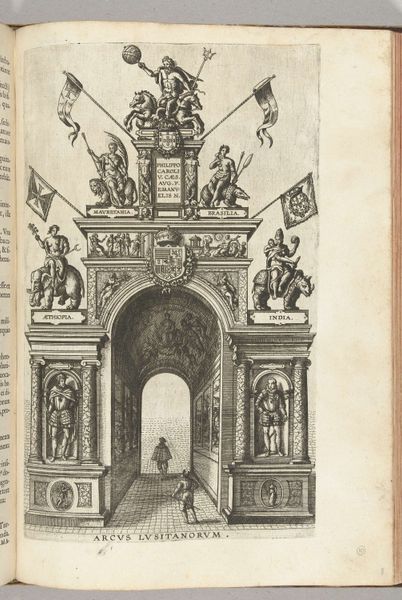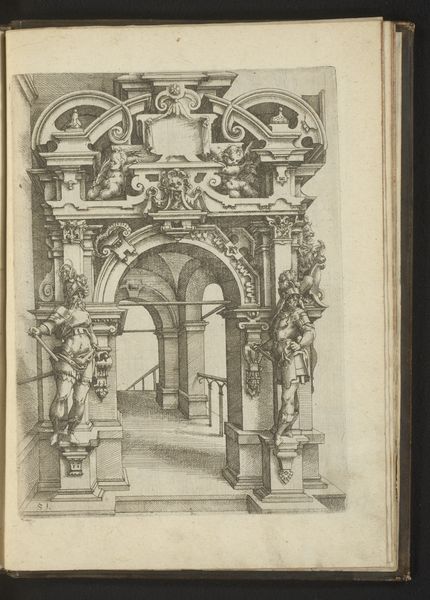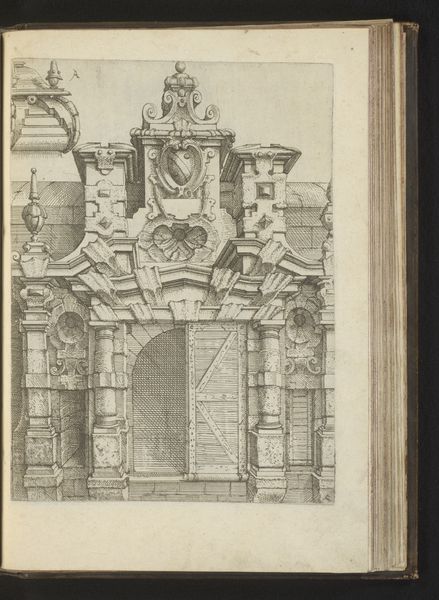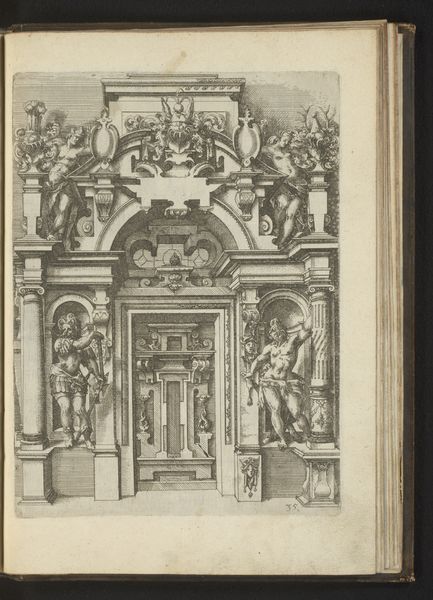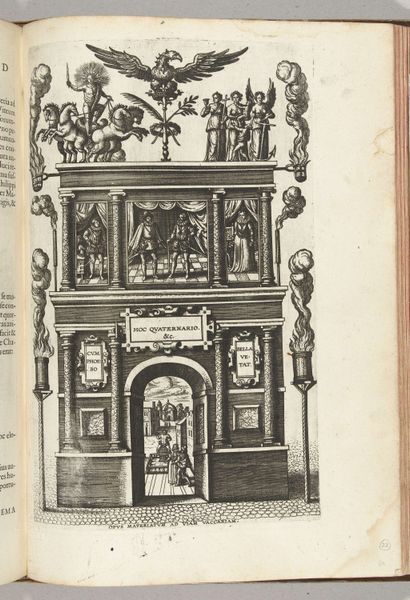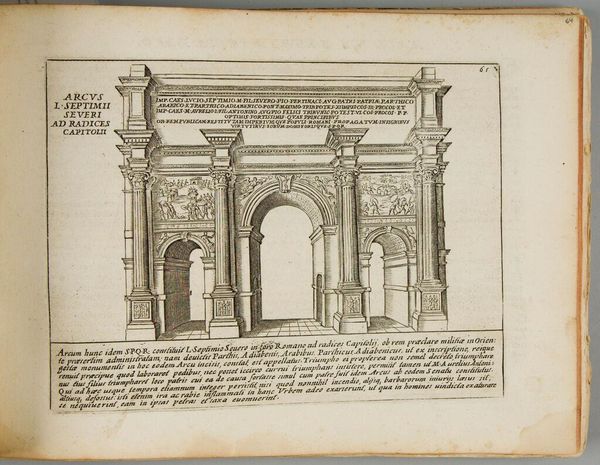
drawing, print, architecture
#
drawing
# print
#
11_renaissance
#
architecture
Dimensions: Overall: 14 7/8 x 10 3/8 x 1 5/8 in. (37.8 x 26.4 x 4.2 cm) sheet: 14 1/2 x 9 5/8 in. (36.9 x 24.5 cm)
Copyright: Public Domain
Curator: Immediately, the severity in the geometry strikes me. The entire composition is dominated by rectangular and cubic shapes. Editor: Indeed, it is quite stark. This is an image from Philibert De L’Orme’s "Le Premier Tome de l'Architecture", dating back to 1567. It is currently held at the Metropolitan Museum of Art here in New York. It's a print, part of an architectural treatise. What do you find compelling about this particular illustration? Curator: The way De L'Orme painstakingly renders these geometric forms and layers is remarkable. He uses very few lines, with subtle tonal shifts that emphasize his mastery of material depiction. The cross-hatching suggests that he is particularly preoccupied with conveying the weight and feel of cut stone. Editor: Certainly, but it's equally compelling to view this through a socio-political lens. De L'Orme was a court architect and this image represents architectural ideals linked to power and status during the French Renaissance. Note the ornamentation, hinting at the intended audience. Curator: I see the reference to aristocracy, of course. And the presence of decoration shows a desire to be opulent. But even then, the structure of the design keeps referring back to industrial manufacturing and careful, manual construction, Editor: I think the point you make about careful construction reflects the time in which this book was produced. Architectural treatises disseminated ideas amongst a broader audience and played an important role in professionalizing architectural labor, in legitimizing design as intellectual property. Curator: Right. What's clear is how this simple drawing can speak volumes about craft, artistic intent, and even the politics that surround the labor of making itself. It is both pragmatic and a kind of architectural wish-fulfillment, I think. Editor: Absolutely. These books shaped architectural taste and legitimized architecture as both an art and a science within specific historical frameworks. It serves as a powerful reminder of the intertwined nature of artistic practice and the sociopolitical landscape in which it exists.
Comments
No comments
Be the first to comment and join the conversation on the ultimate creative platform.
